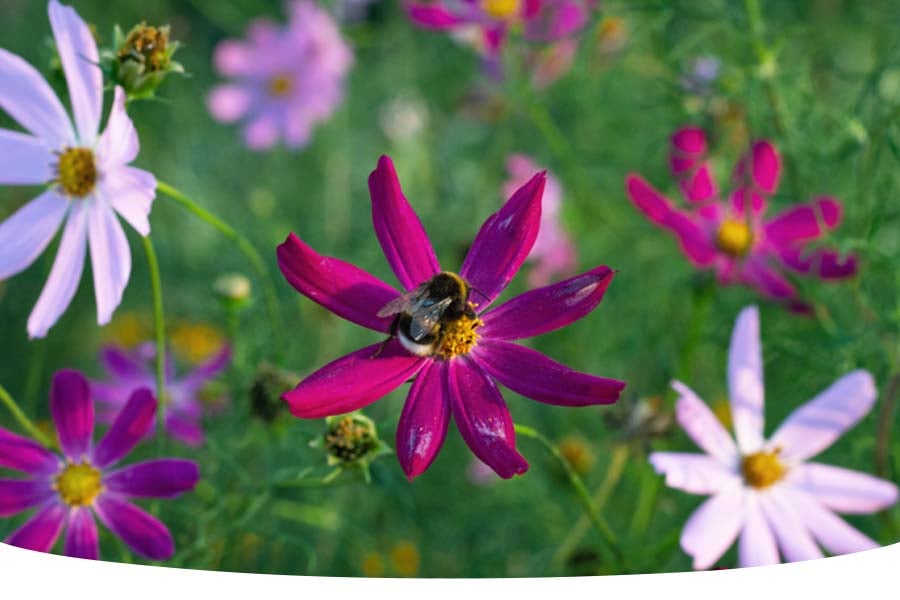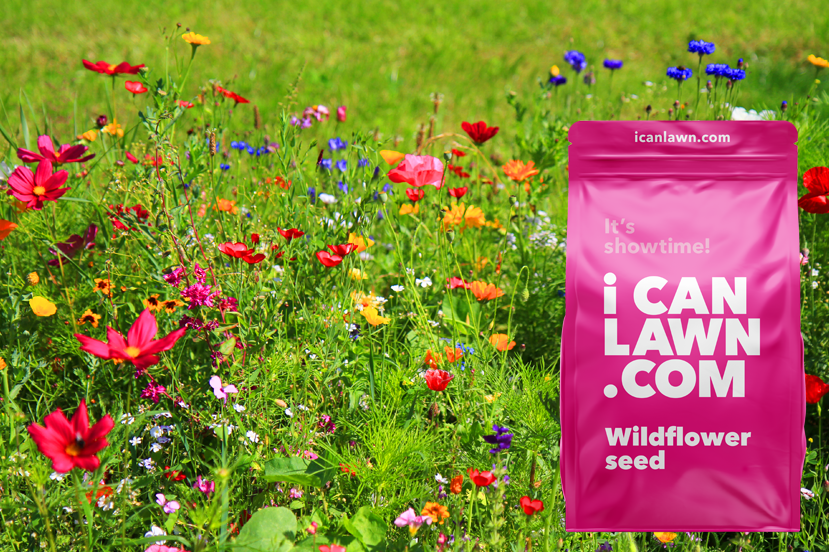10 facts about bees
The sweet smell of pollen lingers in the air, flowers are in bloom, and one of the planet’s hardest-working insects is very busy. What are we talking about? Bees, of course!

We have all come across them numerous times in our life, but how much do you know about our humble buzzing bees? Keep reading for our exciting facts about bees!
Our 10 facts about bees:
Fact #1 - What makes bees buzz?
The sounds of a summer day are incomplete without the familiar hum of bees, buzzing in and out of trees. The same noise causes some of us to swat the air frantically! But what most people don’t know is that the buzzing they hear is actually produced by their wings beating as they fly through the air. This creates vibrations that the human ear detects as buzzing. The reason bees are so noisy is because they beat their wings 11,400 times in one minute.
Fact #2 - Sting Queen!
As common as bee stings may be across the UK, it is only the female bee that can sting you. The stinger, or sting, is a modified egg-laying device; therefore, only females have them. Bees tend to sting to defend their nest, so most bees won’t sting unless provoked or threatened. Although male bees cannot sting, they may engage in defensive behaviours to protect the nest or hive and, of course, their Queen!
Fact #3 – Scary senses
This might be one of those facts you wish you didn’t know, but most people are scared of bees, but as it turns out, bees can smell fear and use it to protect their beehives. They can detect pheromones generated when living beings are fearful. Since the bees can communicate using smell, they can quickly alert their entire colony regarding the smell of fear. So that in a very short time, the whole hive knows!
Fact #4 - 5 eyes surprise!
This would explain why getting close to a bee can be so difficult – They have five eyes! Bees also have three eyes on the top of their heads and two larger ones on the side of their head. The eyes on the top of their head can detect light, allowing the bee to sense if it is being approached from above by a predator. The two larger eyes on the side of a bee’s head allow them to see patterns, which helps them to identify plant types and other bees.
Fact #5 - I don't bee-lieve it
You may think that all bees are the same, but even within one beehive you will find three different types of bees; the workers, drones and a queen. The queens are reproductive bees and are also larger than the workers, whereas the drones are the male species and can be identified through their larger compound eyes. These three types of bees each have their own important roles to play.
Fact #6 – Bees do in fact mean business!
Bees may be small, but the impact they have on our economy - never mind our access to food, is not to be underestimated. Globally, pollinators are responsible for pollinating more than 1,200 types of crops. Every year, pollinators contribute more than $217 billion to the global economy. Many crops, such as almonds, which contribute $4.8 billion to the US industry each year, rely on honey bees for more than 90% of their pollination. This is probably one of the most important facts about bees!
Fact #7 – Bees are partly colour-blind
Even with their five eyes, bees don’t have perfect vision. Their eyes are sensitive more to the blue end of the spectrum and into ultraviolet. Flowers reflect large amounts of ultraviolet light, and a bee will be very bright. But, when it comes to red, bees are totally blind – even with their five eyes!
Fact #8 – Bees like to boogie!
They call it their waggle dance. Their tiny bodies waggle back and forth as they move in a straight line. But the reason for their dancing isn’t what you would imagine. Bees dance to indicate how far they are from a flower patch and then again when they have found one. Because some flowers are sweeter than others, when a good flower patch is found, bees recruit other bees from their colony to the patch by using their special dance.
Fact #9 – The Queen Bee
The queen bee in a hive plays a crucial role in that she is the sole female bee in the hive that lays eggs to make that hive thrive. During their lifetime, the queen bee will release signals that will stop other female bees from reproducing, however, when she dies, those signals wear off and all worker bees can reproduce. At this point, the colony need to get a new worker bee ready to take over as queen bee! They do this by selecting a young larva and feeding it a special ‘royal jelly’ food!
Fact #10 – Not all bees produce honey
Out of 20,000 bee species found across the world, only one of those bees makes honey, and that’s the honeybee. On average, a honeybee will make only 1.5 teaspoons of honey in their lifetime, which seems quite low. But, when you multiply that across the 20,000 to 60,000 bees in each colony – That’s a whole lot of honey!
If you enjoyed reading facts about bees, you can learn more about bees favourite flowers and how to attract them to your garden.








